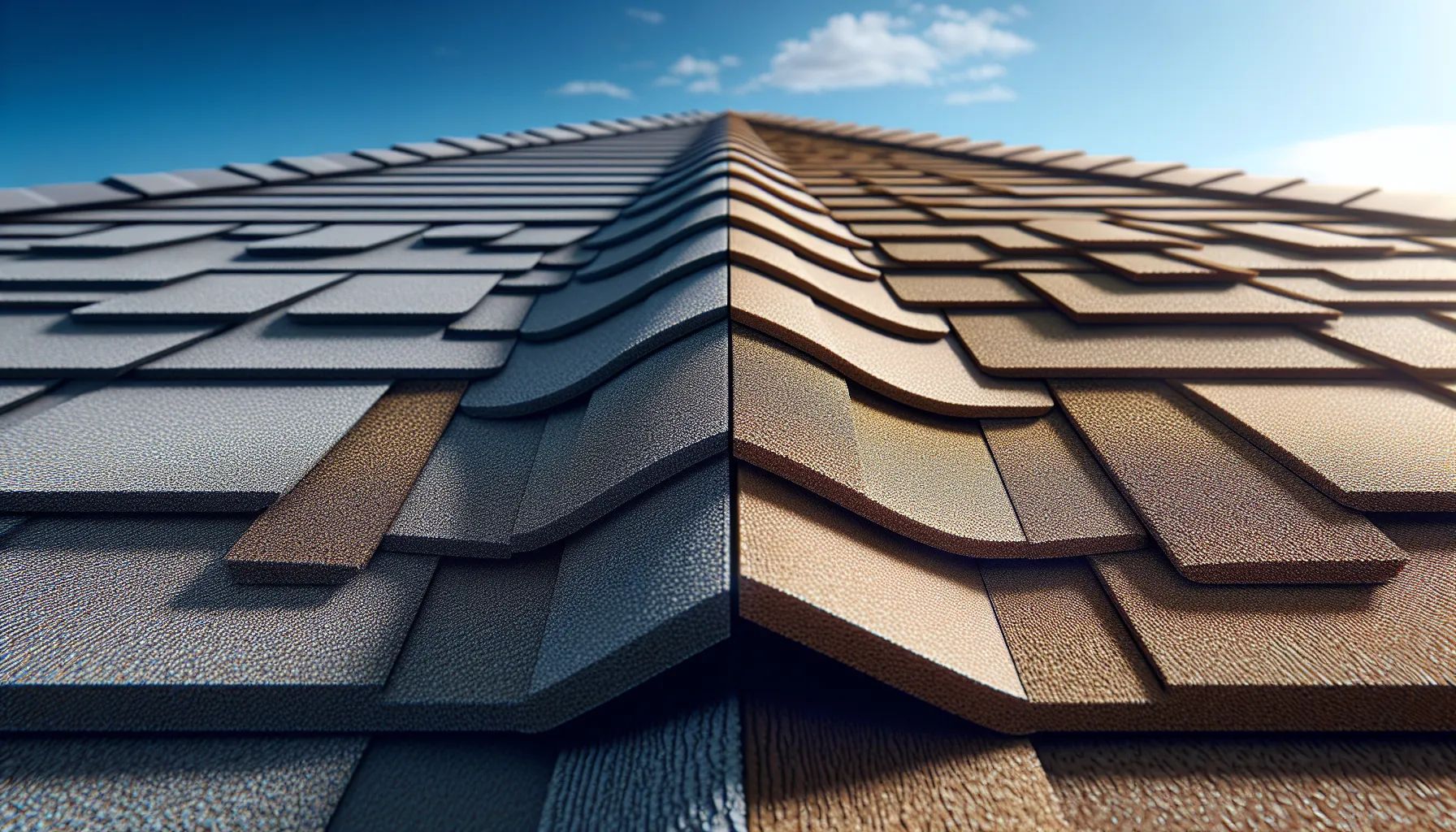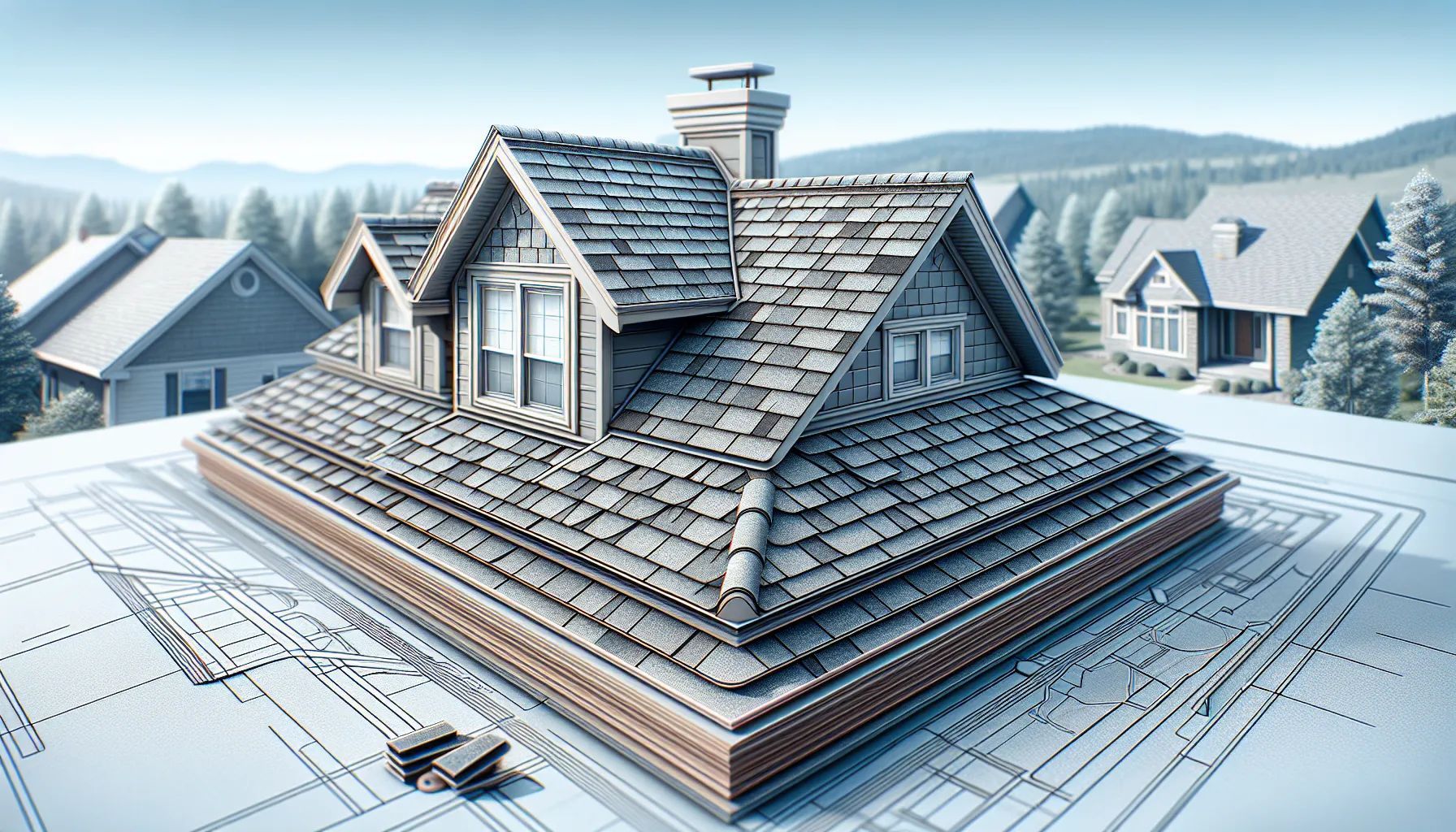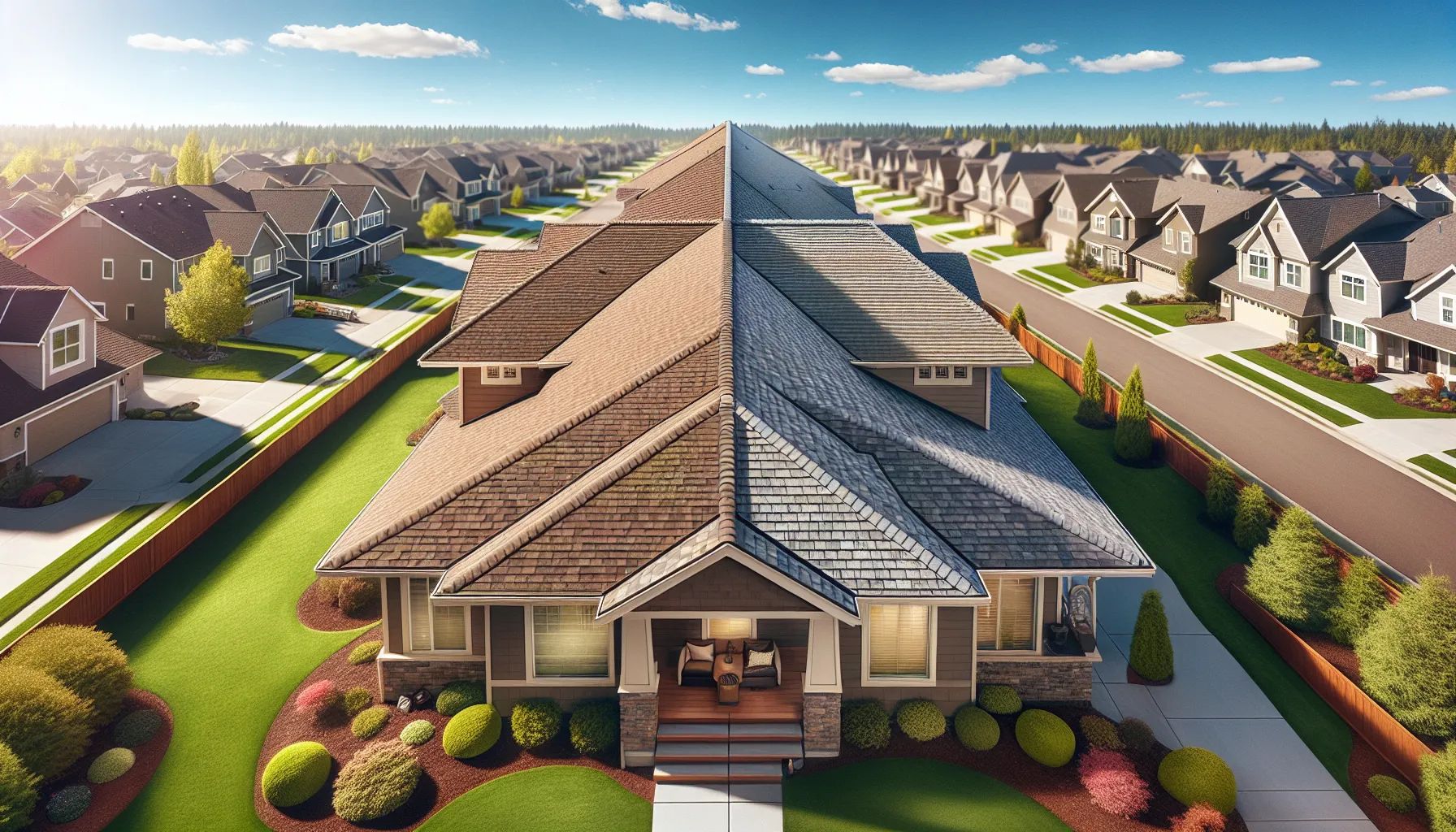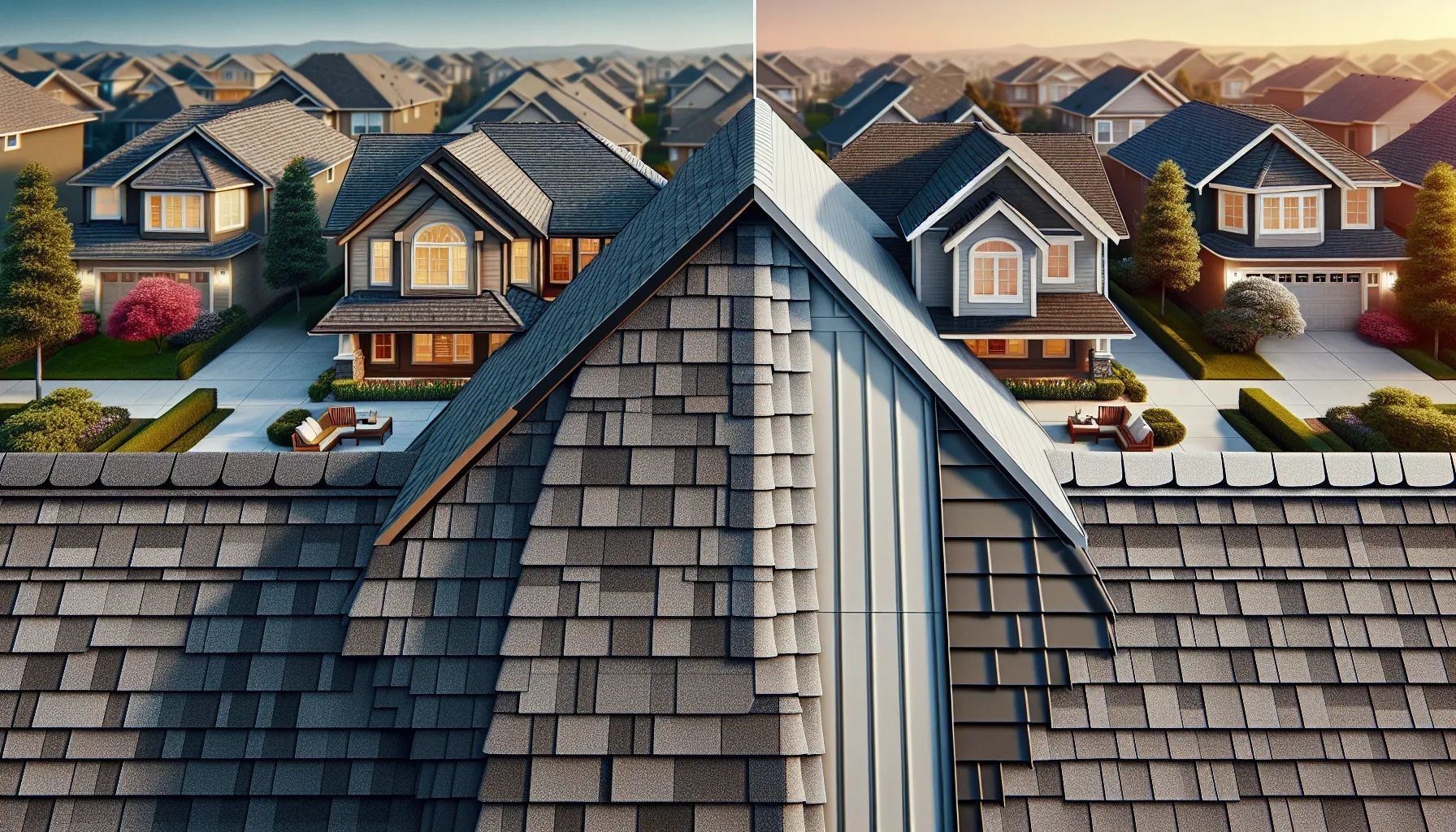Three Tab vs Dimensional Shingles: Which Roofing Option Saves You More Money?

When choosing roofing materials, understanding the differences between three tab vs dimensional shingles can save you thousands of dollars and years of headaches. We've seen countless homeowners struggle with this decision - and for good reason. The roofing industry doesn't always make it easy to compare these two popular options.
Both shingle types have their place in the market but they're designed for different needs and budgets. While they might look similar from the street, the differences in performance, longevity and value become crystal clear once you dig deeper.
We'll break down everything you need to know about these roofing options including costs, durability and aesthetic appeal. By the end, you'll have the confidence to make the right choice for your home and budget.
What Are Three Tab Shingles?
Three tab shingles represent the most basic asphalt roofing option available today. These shingles feature a flat appearance with three uniform tabs along their lower edge, creating a repetitive pattern across the roof surface.
Design and Structure
Three tab shingles consist of a single layer of asphalt material reinforced with fiberglass or organic mat. Each shingle measures 12 inches high by 36 inches wide with three 12-inch tabs separated by two 5-inch cutouts. The tabs create the appearance of three individual shingles when installed.
The manufacturing process involves coating the base mat with asphalt on both sides. Manufacturers apply ceramic-coated mineral granules to the weather-facing surface for UV protection and color. The back receives a layer of adhesive strips and release film.
Standard three tab shingles weigh between 200-240 pounds per square (100 square feet). The single-layer construction results in a thickness of approximately 3/16 inch. This thin profile creates clean, horizontal lines across the roof.
Color options typically include 15-25 choices ranging from basic blacks and grays to browns, reds, and greens. The uniform granule distribution produces consistent coloring without the dimensional variations found in architectural shingles.
Installation Process
Installing three tab shingles begins with proper deck preparation and underlayment application. We start by inspecting the roof deck for damaged areas and making necessary repairs. Ice and water shield goes along eaves and valleys before applying synthetic or felt underlayment across the remaining deck.
The starter strip installation creates the foundation row. We remove the tabs from standard shingles or use dedicated starter products. These strips extend 1/4 to 3/8 inch beyond the drip edge to ensure proper water runoff.
First-course shingles align with the starter strip edge. We secure each shingle with four nails placed 5 5/8 inches from the bottom edge and 1 inch from each side. The nailing pattern positions fasteners above the adhesive strip for optimal wind resistance.
Subsequent courses require a 5-inch exposure and 6-inch offset pattern. We chalk lines every 10 inches vertically to maintain straight rows. The offset pattern alternates starting points: full shingle, 30 inches, 24 inches, 18 inches, 12 inches, then 6 inches before repeating.
Ridge cap installation completes the process. We cut three tab shingles into three 12-inch squares and fold them over the ridge. Starting from the end opposite prevailing winds, we overlap each cap by 5 inches and secure with two nails per piece.
What Are Dimensional Shingles?

Dimensional shingles represent an advanced roofing option that combines multiple asphalt layers to create a thicker, more textured appearance. These architectural shingles offer homeowners enhanced durability and visual appeal compared to basic roofing materials.
Design and Structure
Dimensional shingles feature a multi-layer construction that sets them apart from single-layer alternatives. Manufacturers bond two or more asphalt strips together, creating varying thicknesses across the shingle surface. This layered design produces shadow lines and depth that mimic natural roofing materials like cedar shakes or slate tiles.
The construction process involves laminating asphalt layers with adhesive strips, resulting in shingles weighing 340-420 pounds per square. Each shingle measures approximately 12-13 inches in height and 36-40 inches in length. The exposed portion displays random tab sizes and shapes, breaking up the uniform pattern found in simpler roofing options.
Ceramic-coated granules cover the top layer, providing UV protection and color variety. Manufacturers offer dimensional shingles in over 30 color options, including weathered wood, charcoal, and earth tones. The granules adhere more effectively to the thicker base, reducing granule loss over time.
Installation Process
Installing dimensional shingles follows similar principles to other asphalt roofing but requires attention to their increased weight and thickness. Roofers start by ensuring the roof deck can support the additional 50-100 pounds per square compared to lighter alternatives.
The installation begins with applying synthetic underlayment or 30-pound felt paper across the entire deck surface. Installers position starter strips along the eaves, using either manufactured starter products or inverted dimensional shingles with tabs removed. Each subsequent row overlaps the previous one by 5-6 inches, following manufacturer specifications.
Nailing patterns for dimensional shingles typically require 4-6 nails per shingle, placed above the adhesive strip but below the exposure line. Roofers use 1.25-inch roofing nails for standard installations, adjusting nail length for thicker deck materials. Hip and ridge installations complete the process, using matching dimensional ridge caps that maintain the textured appearance across all roof planes.
Key Differences Between Three Tab and Dimensional Shingles

Three tab and dimensional shingles differ significantly in construction, performance, and value. We'll examine the primary distinctions that impact your roofing decision.
Appearance and Aesthetics
Three tab shingles create a uniform, flat appearance across your roof. Each shingle features three cutouts or "tabs" that produce a repetitive pattern when installed. This design results in clean horizontal lines and a traditional look that many homeowners recognize. Color options typically range from 10-15 choices, including basic shades like charcoal, brown, and gray.
Dimensional shingles transform your roof's appearance through multi-layered construction. The varying thicknesses create shadows and depth that mimic natural materials such as cedar shakes or slate tiles. Manufacturers offer over 30 color variations, including weathered wood, antique slate, and multi-tonal blends. The textured surface adds visual interest from every angle.
The aesthetic difference becomes apparent from the street. Three tab roofs display a smooth, consistent surface that emphasizes the home's architectural lines. Dimensional roofs showcase texture and movement that enhance curb appeal. Real estate professionals report that homes with dimensional shingles often command 3-5% higher resale values due to their premium appearance.
Durability and Lifespan
Three tab shingles consist of a single asphalt layer that provides basic weather protection. Their lifespan averages 15-20 years under normal conditions. Wind resistance ratings typically reach 60-70 mph, though some premium three tab options achieve 110 mph ratings. The single-layer design makes these shingles vulnerable to curling, cracking, and granule loss after 10-12 years.
Dimensional shingles feature multiple bonded layers that enhance structural integrity. These shingles last 30-50 years, with many manufacturers offering 40-year warranties. Wind resistance ratings commonly reach 110-130 mph due to the enhanced nailing zone and adhesive strips. The thicker profile resists impact damage from hail and debris more effectively than three tab alternatives.
Weather performance data reveals significant differences. Three tab shingles experience 25% more weather-related failures within the first decade. Dimensional shingles maintain their protective qualities longer, with granule retention rates 40% higher after 20 years. Insurance companies often provide premium discounts for homes with dimensional shingles due to their superior damage resistance.
Cost Comparison
Three tab shingles cost $60-100 per square (100 square feet) for materials. Installation runs $150-250 per square, bringing total project costs to $210-350 per square. A typical 2,000 square foot home requires approximately 20 squares, resulting in total costs between $4,200-7,000. The lightweight design reduces labor time by 15-20% compared to dimensional installations.
Dimensional shingles range from $100-180 per square for materials. Installation costs increase to $200-350 per square due to additional weight and complexity. Total project costs reach $300-530 per square, translating to $6,000-10,600 for a 2,000 square foot home. The 43% higher upfront investment reflects premium materials and extended performance capabilities.
Long-term value calculations favor dimensional shingles even though higher initial costs. Three tab roofs require replacement every 15-20 years, while dimensional roofs last 30-50 years. Over a 50-year period, homeowners typically replace three tab shingles 2-3 times versus once for dimensional shingles. This difference saves $8,000-15,000 in replacement costs, making dimensional shingles more economical over time.
Performance in Different Weather Conditions

Roofing shingles face constant exposure to harsh weather elements throughout their lifespan. We'll examine how three-tab and dimensional shingles perform under various weather conditions to help you understand which option provides better protection for your home.
Wind Resistance
Three-tab shingles withstand wind speeds up to 60 miles per hour. This rating makes them suitable for areas with mild to moderate wind conditions. Their single-layer construction and lighter weight contribute to lower wind resistance compared to dimensional options.
Dimensional shingles excel in wind resistance with ratings between 80-120 mph. The multi-layer construction creates a heavier product that adheres better to the roof deck. This enhanced performance proves crucial in regions experiencing severe weather events like hurricanes or frequent windstorms.
The installation method also affects wind performance. Three-tab shingles require precise nailing patterns to achieve their maximum wind rating. Four nails per shingle placed in specific locations ensure optimal holding power. Dimensional shingles use six nails per shingle due to their increased weight and surface area.
Wind damage typically occurs at roof edges and corners first. Three-tab shingles show vulnerability in these areas during strong winds. Dimensional shingles' thicker profile and better adhesion provide superior edge protection against wind uplift.
Impact Resistance
Impact resistance determines how well shingles withstand hail damage and falling debris. Three-tab shingles carry a Class 3 impact rating, indicating moderate protection against hailstones up to 1.75 inches in diameter.
Dimensional shingles achieve Class 4 impact ratings, the highest classification available. This rating means they resist damage from hailstones up to 2 inches in diameter. The multiple asphalt layers absorb impact energy more effectively than single-layer three-tab products.
Insurance companies often offer premium discounts for homes with Class 4 rated shingles. These discounts range from 5-35% depending on your location and insurance provider. The savings can offset the higher initial cost of dimensional shingles over time.
Fire resistance also differs between these products. Dimensional shingles typically achieve Class A fire ratings while three-tab options often carry Class B or C ratings. The thicker construction of dimensional shingles provides better protection against fire spread across the roof surface.
Warranty and Long-Term Value
Warranty coverage and long-term value determine the overall cost-effectiveness of your roofing investment. We'll examine how three-tab and dimensional shingles compare in these critical areas.
Warranty Coverage Comparison
Three-tab shingles carry warranties between 15-30 years. Most manufacturers provide 20-year coverage as their standard offering. These warranties cover manufacturing defects and premature deterioration under normal weather conditions.
Dimensional shingles feature extended warranties of 30 years or more. Premium manufacturers offer lifetime warranties on select product lines. The enhanced coverage reflects the superior construction quality and materials used in dimensional shingles.
Warranty terms vary by manufacturer and installation quality. Professional installation by certified contractors often extends warranty coverage. Some warranties prorate coverage after the initial period, reducing compensation for older roofs.
Lifespan Expectations
Three-tab shingles last 10-20 years in real-world conditions. Climate factors, installation quality, and maintenance frequency affect actual lifespan. Homes in severe weather regions experience shorter three-tab shingle lifespans.
Dimensional shingles perform for up to 30 years. Their multi-layer construction resists weathering better than single-layer alternatives. The thicker profile maintains integrity longer under UV exposure and temperature fluctuations.
Wind Resistance Ratings
Three-tab shingles withstand winds up to 60 mph. This rating suits regions with mild to moderate wind exposure. Storm-prone areas require additional fastening methods to maintain three-tab shingle integrity.
Dimensional shingles resist winds between 80-120 mph. The heavier weight and improved adhesion create superior wind performance. High-wind warranties accompany many dimensional shingle products when installed correctly.
Cost Analysis Over Time
| Feature | Three-Tab Shingles | Dimensional Shingles |
|---|---|---|
| Initial Cost per sq ft | $1-$2 | $4-$8 |
| Installation Labor | Lower | Higher |
| Replacement Frequency | Every 10-20 years | Every 30 years |
| Total 30-Year Cost | Higher due to replacements | Lower overall |
Three-tab shingles cost $60-$100 per square initially. Installation proceeds quickly due to lighter weight and simpler patterns. DIY installers often choose three-tab shingles for manageable handling.
Dimensional shingles require $400-$800 per square investment. Professional installation becomes necessary due to weight and complexity. The higher upfront cost balances against extended service life.
Impact on Home Value
Three-tab shingles provide basic weather protection without aesthetic enhancement. Real estate appraisers note minimal value addition from three-tab installations. Buyers perceive three-tab roofs as requiring sooner replacement.
Dimensional shingles increase curb appeal significantly. The textured appearance mimics premium materials like cedar shakes or slate tiles. Home values increase 3-5% with dimensional shingle installations according to remodeling studies.
Insurance Considerations
Insurance providers recognize the durability differences between shingle types. Three-tab roofs may face higher premiums in storm-prone regions. Some insurers require roof inspections for three-tab shingles over 15 years old.
Dimensional shingles qualify for premium discounts with many carriers. The Class 4 impact rating available on select dimensional products reduces hail damage claims. Annual savings of 5-20% on homeowners insurance offset initial installation costs.
Making the Value Decision
Budget constraints favor three-tab shingles for immediate needs. Short-term ownership plans (under 10 years) align with three-tab economics. Rental properties benefit from lower initial investments.
Long-term homeowners gain from dimensional shingle investments. The 30-year lifespan eliminates multiple replacement cycles. Enhanced weather protection reduces maintenance expenses over time.
Climate conditions influence the value proposition significantly. Mild climates extend three-tab shingle performance closer to warranty limits. Severe weather regions demand dimensional shingles' superior resistance ratings.
Property location affects resale considerations. Upscale neighborhoods expect dimensional shingle quality. Three-tab installations may reduce marketability in premium home markets.
Financing options change the affordability equation. Many contractors offer payment plans for dimensional shingle projects. The monthly cost difference becomes minimal when financed over several years.
Energy efficiency improvements accompany some dimensional shingle lines. Reflective granules reduce cooling costs in warm climates. Three-tab shingles lack these advanced coating technologies.
Maintenance requirements differ between shingle types. Three-tab shingles need frequent inspections for lifting edges. Dimensional shingles resist common failure modes through superior adhesion.
Professional roofers recommend dimensional shingles for most applications. The long-term savings justify higher initial investments. Three-tab shingles serve specific situations requiring minimal upfront costs.
Which Shingle Type Is Right for Your Home?
Selecting the correct shingle type involves evaluating your local climate, available budget, and home's architectural design. We've analyzed how these factors impact your roofing decision to help you choose between three-tab and dimensional shingles.
Climate Considerations
Your regional weather patterns determine which shingle performs best on your roof. Three-tab shingles withstand wind speeds up to 60-70 mph and function adequately in mild climates with minimal severe weather events. These shingles suit homes in regions experiencing average rainfall and moderate temperature fluctuations.
Dimensional shingles excel in harsh weather conditions with wind resistance ratings reaching 130 mph. Their multi-layered construction provides superior protection against heavy rain, hail, and extreme temperature changes. Homes in hurricane zones, tornado alleys, or areas with frequent thunderstorms benefit from dimensional shingles' enhanced durability.
Snow accumulation affects shingle performance differently. Three-tab shingles' flat surface allows snow to slide off easily but offers less insulation. Dimensional shingles' textured surface retains snow longer, creating natural insulation that reduces heating costs by 10-15% during winter months.
Temperature extremes cause expansion and contraction in roofing materials. Three-tab shingles crack more readily under repeated thermal cycling, especially in climates with 40°F+ daily temperature swings. Dimensional shingles' thicker profile resists thermal damage, maintaining integrity through 20-30 years of temperature variations.
Budget Considerations
Three-tab shingles cost $1-3 per square foot installed, making them attractive for homeowners with limited immediate funds. A 2,000 square foot roof requires $2,000-6,000 for complete three-tab shingle installation. This lower entry price fits tight budgets or short-term ownership plans.
Dimensional shingles range from $4-8 per square foot installed, requiring $8,000-16,000 for the same 2,000 square foot roof. The higher upfront investment pays dividends through extended lifespan and reduced maintenance needs. Insurance discounts of 5-20% for impact-resistant dimensional shingles offset initial costs within 5-7 years.
Long-term financial analysis favors dimensional shingles. Three-tab roofs require replacement every 15-20 years, accumulating $6,000-18,000 in costs over 30 years. Dimensional shingles last 30-50 years, eliminating replacement expenses and saving homeowners $4,000-12,000 over three decades.
Financing options make dimensional shingles accessible to budget-conscious homeowners. Many roofing companies offer 0% interest payment plans spanning 12-60 months. These programs allow homeowners to spread costs while immediately benefiting from superior protection and energy savings.
Architectural Style Match
Three-tab shingles complement traditional ranch homes, colonial designs, and simple architectural styles. Their uniform appearance creates clean rooflines that enhance minimalist aesthetics. Cape Cod homes, bungalows, and modest suburban houses maintain their classic appeal with three-tab shingle installations.
Dimensional shingles elevate contemporary homes, Victorian estates, and custom-built residences. Their textured profiles add visual depth to complex rooflines featuring dormers, turrets, or multiple gables. Tudor-style homes benefit from dimensional shingles that mimic authentic slate or cedar shake appearances.
Color selection impacts architectural harmony. Three-tab shingles offer 10-15 basic colors including black, gray, and brown variants. Dimensional shingles provide 30+ color options with multi-tonal blends that coordinate with diverse exterior palettes. Earth-tone dimensional shingles enhance natural stone facades while cool gray options complement modern metal accents.
Neighborhood standards influence shingle selection. Upscale communities often mandate dimensional shingles through HOA requirements to maintain property values. Three-tab shingles remain acceptable in established neighborhoods where uniformity takes precedence over individual expression. We recommend reviewing community guidelines before finalizing your shingle choice.
Conclusion
The choice between three-tab and dimensional shingles eventually depends on your specific circumstances and priorities. We've seen how each option serves distinct purposes in the roofing market.
For homeowners planning to stay in their homes long-term or living in areas with challenging weather conditions, dimensional shingles prove their worth through superior protection and lasting value. Their enhanced durability translates to fewer headaches and lower lifetime costs.
Those with immediate budget constraints or short-term ownership plans might find three-tab shingles meet their needs adequately. They're a practical solution when upfront costs take priority over long-term performance.
We recommend consulting with local roofing professionals who understand your area's specific weather patterns and building requirements. They'll help you weigh the trade-offs between initial investment and future benefits.
Remember that your roof protects everything beneath it. Whether you choose the affordability of three-tab or the resilience of dimensional shingles, ensuring proper installation by qualified contractors remains paramount to maximizing your investment's value and performance.
What is the main difference between three-tab and dimensional shingles?
Three-tab shingles feature a single layer with a flat, uniform appearance and three distinct tabs. Dimensional shingles have multiple layers bonded together, creating a textured, three-dimensional look that mimics natural materials like cedar or slate. This construction difference affects durability, appearance, and cost.
How long do three-tab shingles last compared to dimensional shingles?
Three-tab shingles typically last 15-20 years under normal conditions, while dimensional shingles can last 30-50 years. The longer lifespan of dimensional shingles is due to their multi-layer construction and heavier weight, which provides better protection against weather elements.
Which type of shingle is more cost-effective in the long run?
While three-tab shingles cost less initially, dimensional shingles prove more cost-effective over time. The need to replace three-tab shingles multiple times over 30 years makes them more expensive than investing once in longer-lasting dimensional shingles.
What wind speeds can each shingle type withstand?
Three-tab shingles typically withstand wind speeds up to 60-70 mph, making them suitable for mild climates. Dimensional shingles offer superior wind resistance, handling speeds between 80-130 mph depending on the specific product and installation method.
Do insurance companies offer discounts for certain shingle types?
Yes, many insurance companies offer premium discounts for homes with dimensional shingles, especially those with Class 4 impact ratings. These discounts can range from 5-20% in storm-prone areas, helping offset the higher initial cost of dimensional shingles.
Which shingle type is better for increasing home value?
Dimensional shingles can increase home value by 3-5% due to their enhanced curb appeal and longer lifespan. Three-tab shingles provide minimal aesthetic enhancement and typically don't add significant value to properties.
Are there warranty differences between the two shingle types?
Three-tab shingles usually come with 15-30 year warranties, while dimensional shingles often feature 30-year to lifetime warranties. The extended coverage reflects the manufacturers' confidence in dimensional shingles' superior durability and performance.
Which shingle type is easier to install?
Both types follow similar installation processes, but three-tab shingles are slightly easier to install due to their lighter weight and uniform design. Dimensional shingles require more careful handling due to their heavier weight and varied thickness.

